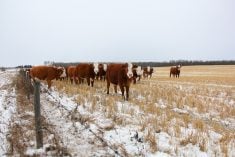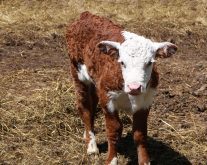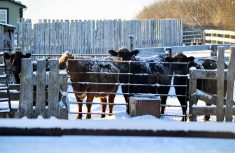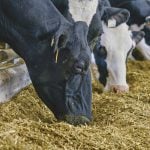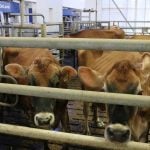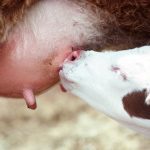Nate walked through a pen of calves he had just weaned from his first-calf heifers. The day before, he’d noticed flecks of blood in some of the stools, but overall, the calves seemed bright and were eating the hay and chopped oats he offered in bunks. Today, however, he saw blood clots in stools and some calves appeared sick. Several animals displayed nervous tremors.
Nate called the clinic. He remembered last year’s outbreak of coccidiosis and thought coccidiosis had shown up again, with the exception of some calves that seemed to be showing nervous signs. I informed him nervous signs were quite normal with coccidiosis, in fact up to 50 per cent of calves can be affected with nervous signs in some outbreaks. Nervous signs range from tremors, sensitivity to touch and paddling convulsions. Mortality in cases exhibiting clinical signs may exceed 80 per cent if clinical signs exceed 24 hours.
- MORE ‘Veterinary Case study’: IBR is a serious cause of abortion in beef cattle
Coccidiosis in cattle is a contagious enteritis. All domestic animals are affected by the many species of Eimeria and Isospora. Eimeria is an intracellular protozoa that attacks cells lining the intestinal tract (both large and small intestine), characterized by diarrhea and dysentery. Blood loss may result in anemia. Chronic infections negatively affect animals through low growth rates and poor production. Coccidiosis occurs worldwide. Overcrowding and feeding animals on the ground increases disease incidence.
An infection of 1,000 oocysts can lead to the destruction of 24 billion host intestinal cells. Some experimental studies show reduced weight gains in young calves throughout their first grazing season. Coccidiosis is a self-limiting disease, and spontaneous recovery without specific treatment is common once the multiplication stage of the coccidia has passed. Underlying stress, during or after infection, increases susceptibility to other diseases, especially respiratory disease.
Read Also
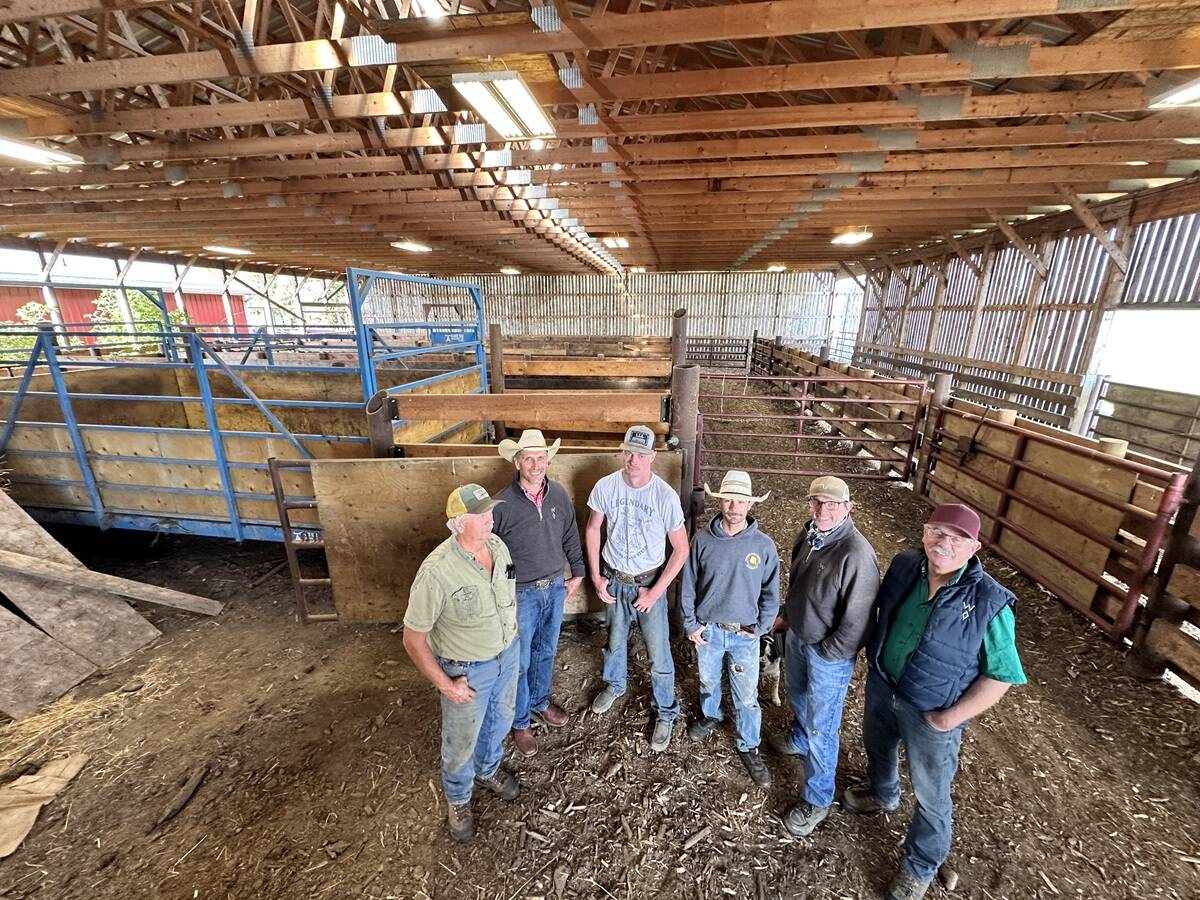
Farm families work together to graze cropland with cattle in the fall
These Alberta farm families have separate operations, but work together to manage their land
Because coccidiosis is self-limiting, cattle without clinical signs need not be treated. Ideally, clinically affected calves should be moved to a separate pen and provided extra bedding, good-quality feed and water. Ensure feed and water troughs are not contaminated.
Once calves are ill, treatment success is variable, depending on the extent of intestinal damage. Because feed and water intake is often decreased, individual treatment of ill calves is often necessary. Cattle vaccines are not available, partly because of the number of pathogenic species and a lack of complete understanding of immunity to the parasite.
In summary:
- Coccidiosis is a gastrointestinal illness caused by a protozoan parasite that invades cells lining the intestinal tract.
- Clinical signs include bloody diarrhea (with or without mucus), lethargy, weight loss, signs of abdominal pain, pallor and anorexia.
Oocysts can be identified in feces by use of salt or sugar flotation methods, or direct intestinal smears.
Antiprotozoal treatment can shorten the length of illness, decrease discharge of oocysts, alleviate clinical signs, and reduce likelihood of secondary infections and death. Several choices exist:
- Diclazuril or toltrazuril administered to all affected calves.
- Sulfadimethoxine is used in cattle in North America.
- Sulfamethazine (sulfadimidine) is also used, in the drinking water or as a drench.
- Sulfaquinoxaline (in the drinking water or by drench if not drinking sufficiently) is approved by the U.S. FDA for coccidiosis treatment. It is reported to be particularly useful for weaned calves that develop bloody diarrhea after arrival at a feedlot.
- Injectable sulfonamide treatment may be indicated to control development of secondary bacterial enteritis or pneumonia, which often accompanies coccidiosis during cold weather.
- Decoquinate.
- Amprolium (in the drinking water, feed or by drench) is used as a treatment course. Drench is preferable when calves are ill. The use of amprolium in calves is controversial because it can cause thiamine deficiency and associated neurologic disease. After treatment with amprolium, it is advisable to provide thiamine.
Besides coccidiostats, fluid therapy or blood transfusions may be needed in cases of dehydration, dysentery and anemia.
Corticosteroids are contraindicated because they increase the shedding of oocysts and have induced clinical disease in subclinically infected calves.
Producers are encouraged to work with their veterinary practitioners. Most practitioners have treatment protocols that they successfully use to manage this common, yet troubling, disease.






